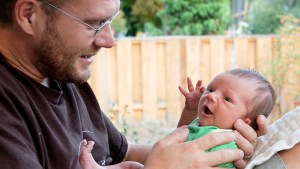When I mention that I chart my fertility using a fertility awareness based method (known as FABM for short), it’s not uncommon for people to ask questions — and a lot of them.
FABMs are misunderstood in today’s culture. Often mistaken for the rhythm method of the 1900s, natural fertility methods are often skipped over as unreliable and outdated. But in reality, FABMs are rooted in scientific data and offer a holistic approach to women’s health.
A holistic approach healthcare
Fertility awareness and healthy dating relationships
It’s freeing to know how fertility works
No more band-aid health fixes
“I switched to using a NFP method just six months ago,” explained 20-year-old college student Jessica Flach. She was put on a high dosage birth control pill when she was 15 years old after she expressed a concern for her irregular periods to her gynecologist. But during her freshman year of high school, Jessica began to notice changes in her personality and health.
“My mood completely changed. I was a fairly happy and well mannered kid, but the pill made my head very confused. I couldn’t process my emotions and didn’t know how to explain the constant juxtaposition I was in,” she explained. Even though she was in her first romantic relationship, she experienced no emotional attachment to her boyfriend. “I broke up with him shortly after, blaming a lot of my confusion on my feelings changing.”
Looking back on her high school experience, she realize that no one took the time to explain the side effects of the pill to her. “Sure, they were on the box, sure, but I barely understood what depression was. I was feeling and going through what fit under that label and in the box’s listed side effects,” she remembered. For the next four years, she shied away from any type of medication because of her experience with birth control.
When Jessica left for college, she learned more about her Catholic faith, and discovered the Church’s teachings on NFP. At the beginning of this year, she brought concerns about her cycle to a gynecologists who encouraged women to chart their cycles. It was during that appointment that she discovered that her symptoms point to endometriosis, which runs in her family medical history. “I understand my cycle much better, and it’s allowed for more knowledge and understanding, especially with my moods, and with my gynecologist. Even though I only switched in the last six months, I feel a lot more comfortable about the choices I’m making and I understand myself and thus my body a lot more. I think overall the best thing that has come out of this journey is my relationship with my gynecologist.”
Approaching fertility as a team in marriage
When Kate Hendrick was a senior in high school, she was looking forward to a huge backpacking trip that she’d been dreaming of for years. “When I looked into managing menstruation while backpacking, most of the advice comes down to skipping your period by using artificial birth control. I went to my primary care physician, explained my situation, and went on birth control,” Kate remembered. “Though I wasn’t sexually active, being on birth control at 18 was just the ‘normal’ thing to do. I wasn’t aware of any of the risks or the moral issues surrounding it. I just liked being in control of when I got my period.”
It wasn’t until she stumbled upon information about FABM through Catholic bloggers on Tumblr that Kate realized there were different options. “I had never heard about FABMs before, but as an engineering student, I was really interested in the data supporting their efficacy,” Kate said. “I knew that hormonal birth control was no longer an option, and when I had the option to learn Creighton as part of my marriage prep, there was no doubt in my mind that this was a great thing to do for my health and relationship.”
Shortly after she was diagnosed with latent autoimmune diabetes of adults, Kate stopped taking hormonal birth control. But she admits what really informed her decision. “I had just had a major reversion experience so I wanted to be faithful to all Church teachings even though I didn’t fully understand them. I also was finally introduced to the dangers of hormonal birth control. I was horrified learning about all the risks. I just had an enormous, life-changing diagnosis with a disease that could harm my entire body.”
Now, Kate is 25 years old and a process engineer in research and development. She’s been married for two years, and continues to learn more about the benefits of FABM in both her health and her marriage. “The big thing about stopping hormonal birth control was my thyroid levels went right back to normal and my depression was more manageable. The obvious benefit of using NFP for me is that it is in line with Church teaching, but it also genuinely has been a blessing for my marriage and my health. I love that my husband and I can talk about my health and that it is a team effort.”
Advocating for women’s health
Kristen Muldoon has been married for five years, but she remembers what it was like to be on birth control in college. Her doctor prescribed a birth control shot for a year, then put Kristen on a birth control pill for six months. “The shot was annoying because it led to spotting almost every day for about six months,” she recalled. “But after that I didn’t have a period at all.”
It wasn’t until she had a reversion to the Catholic faith that she took a closer look at birth control. “Once I started seeking the truth in Church teaching, I realized Natural Family Planning was the only option I felt comfortable with,” she explained. “That also led me to investigate the negative health effects of hormonal birth control … I was shocked at how much information I learned about my body! I am now a vocal advocate of all things NFP/FABM to my friends and family. Every woman deserves to know how their reproductive system is actually designed to work.”
When she talked about the difference charting her cycle has made in her life, Kristen emphasized the spiritual benefits. “I know I am acting in alignment with Church teaching,” she said. “I am glad I am not putting cancer-causing hormones into my body or stopping it from functioning as designed. I also like that practicing NFP constantly requires my husband and me to discuss our plans for our family.”

Read more:
How natural family planning empowers men

